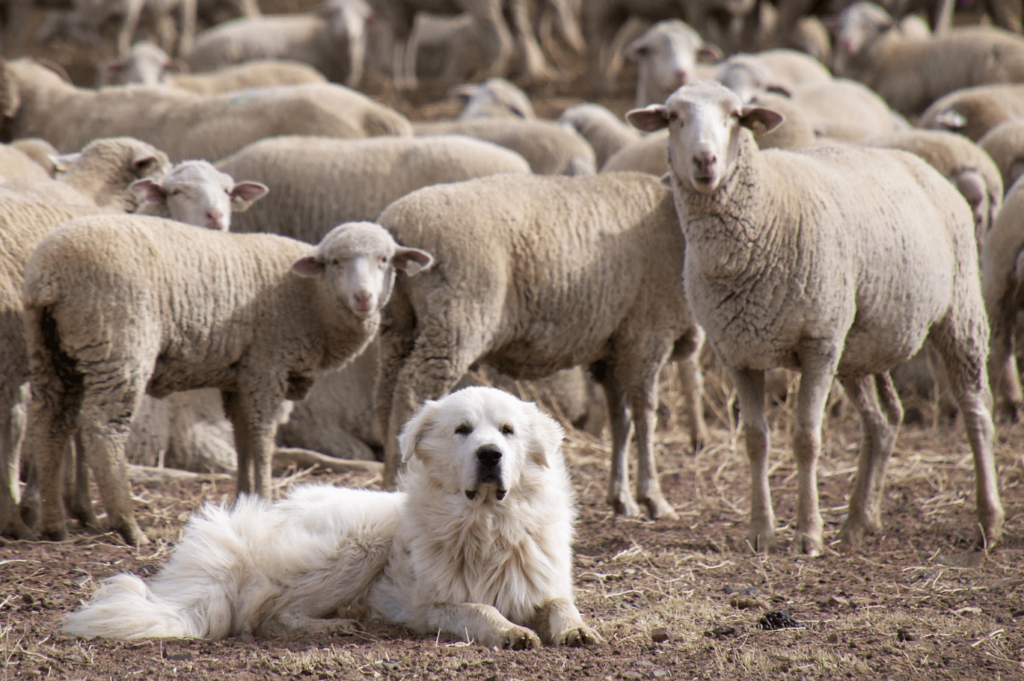The relationship between dogs and sheep is one of the most fascinating in the animal kingdom. Dogs have worked alongside humans for centuries, herding and protecting sheep from threats and helping to manage farms. This unique partnership is not only a testament to the intelligence and adaptability of dogs but also to the deep bond they share with the animals they protect. In this article, we’ll explore the historical, practical, and emotional facets of this remarkable relationship, revealing how dogs have become essential companions and guardians to sheep around the world.

I. Historical Overview of Dogs and Sheep in Agriculture
The use of dogs in sheep herding dates back thousands of years, with evidence suggesting that early humans bred dogs specifically for this purpose. Ancient civilizations, including the Romans and Egyptians, recognized the utility of dogs in managing livestock. Over centuries, certain breeds evolved with specific herding instincts, becoming indispensable to agricultural societies. The role of dogs has transformed over time, shifting from mere guardians of livestock to skilled herders, capable of moving and managing large flocks with precision and intelligence.
II. Types of Working Dogs with Sheep
- Herding Dogs: Breeds like Border Collies and Australian Shepherds are known for their intense focus and herding instincts. They possess an inherent ability to control sheep, often using a method called “eye”—a fixed, intense stare that influences the movement of sheep. These dogs are fast, agile, and highly trainable, making them ideal for guiding and grouping sheep over large areas.
- Guardian Dogs: In contrast to herding dogs, guardian breeds like the Great Pyrenees and Anatolian Shepherds protect sheep from predators rather than guiding them. These dogs are large, fearless, and instinctively watchful, blending into the flock to create a protective presence. Their loyalty and protective instincts make them effective against threats like wolves and coyotes.
- Comparison of Roles: While herding dogs focus on movement and control, guardian dogs provide security. Both types are vital on farms, each fulfilling a unique role in the well-being of sheep. The harmony between these types of dogs highlights the versatility and adaptability of canine abilities in agricultural settings.
III. The Training Process
Training dogs to work with sheep is a complex and nuanced process. Herding dogs undergo rigorous training to learn various commands that allow them to move sheep with precision. They learn verbal cues and whistle commands to guide the flock, ensuring that they don’t harm the sheep in the process. In contrast, guardian dogs are trained more passively, allowing their natural instincts to develop through exposure to sheep from a young age. These dogs grow to see sheep as part of their pack, fostering a protective instinct that doesn’t require active herding.
Challenges in training include ensuring the dog’s natural instincts don’t lead to overzealous behavior, which can cause stress to the sheep. A skilled trainer is essential in refining these instincts and guiding the dog toward effective teamwork with the flock.

IV. Behavioral Dynamics Between Dogs and Sheep
The interaction between dogs and sheep is built on subtle communication cues and mutual understanding. Herding dogs use body language—like positioning, pacing, and “the eye”—to influence sheep movement. Over time, sheep learn to trust the dog, responding to its presence and guidance without panic.
Guardian dogs communicate their protective intent through posture and positioning within the flock, often sleeping near the sheep to maintain a watchful presence. This relationship hinges on trust, where sheep feel secure around the dog, seeing it as part of the flock rather than a threat.
In cases of conflict, such as when a new dog is introduced, careful management is needed to prevent stress among the sheep. Understanding each animal’s behavior and adjusting to the flock’s dynamics is essential in maintaining harmony on the farm.
V. Case Studies and Real-World Examples
- Famous Working Dogs: One notable example is that of Old Hemp, a Border Collie from England in the late 1800s, who became the standard for herding behavior. His calm yet focused approach inspired generations of herding dogs and contributed to the breed’s popularity.
- Farm Experiences: Many farmers recount stories of dogs who have saved flocks from predator attacks or who intuitively managed a wayward flock in challenging conditions. Such stories illustrate the intelligence and loyalty of these working dogs, cementing their status as invaluable assets to the farm.
- Science Behind Success: Studies have shown that dogs possess a natural ability to understand human gestures and communicate with livestock. This inherent skill is refined through training and has been shown to improve efficiency and reduce stress in sheep, contributing to healthier, more productive flocks.
VI. The Modern-Day Bond Between Dogs and Sheep
In today’s world, the roles of dogs in sheep management are evolving. Technology has introduced new methods of farm management, with drones and sensors playing a role. However, the unique bond between dogs and sheep remains irreplaceable. In many farms, dogs are still the primary method for herding and guarding, their presence offering both practical benefits and an emotional connection that technology cannot replicate.
Emotional Bond: Beyond their practical roles, many farmers view their working dogs as part of the family, recognizing the loyalty and dedication these animals bring. The emotional connection between dogs, sheep, and farmers underscores the significance of this relationship in agricultural life.

Conclusion
The relationship between dogs and sheep is a beautiful example of interspecies cooperation. It showcases the intelligence and adaptability of dogs, as well as the instinctual trust that sheep can place in these guardians. As agricultural practices continue to evolve, the timeless bond between dogs and sheep serves as a reminder of the profound connections that can form between animals and the essential role they play in sustaining farm life. The future may bring technological advancements, but the unique partnership between dogs and sheep is likely to endure, rooted in a history of trust, protection, and companionship.